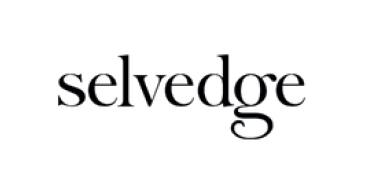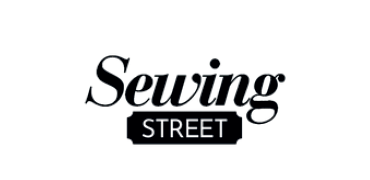Liberty Wiltshire Patchwork Quilted Jacket
How amazing is this patchwork quilted jacket that Lucy has made?! She used leftover fabric and old clothing to create this amazing reversible jacket. Here’s Lucy to tell you all about her amazing make!

“I make no secret of the fact that since I started working here at Alice Caroline I have been slowly drawn into the wonderful world of English Paper Piecing, like a moth to a flame! There is something so addictive about taking a handful of paper shapes, covering them with tiny pieces of beautiful fabrics then sewing them all together, one by one, to form a completely new and intricate design that literally grows and takes shape in front of your eyes. That and the fact that all this is achievable whilst tucked up on the sofa with the dog, a glass of wine, and something good on the TV! Coupled with my love (obsession…?) for altering, revamping, and generally cobbling together items of old clothing (let’s call it upcycling) I suppose it was only a matter of time before I decided to try and make a patchwork quilted jacket!”
“The idea actually came to me a few years ago and like so many sewing ideas it took root inside my head and just kept on growing! During this time, whilst scrolling through images online looking for inspiration, I stumbled across someone called Allie @reclaim.creative on Instagram. This remarkable, hardworking young woman reclaims forgotten textiles (including many quilts) and transforms them into the most beautiful clothing and accessories, including a dazzling range of quilted coats. Unfortunately for me, I didn’t have a ready made old quilt to work with, so I set out to make my jacket from scratch.”

“I chose to use the Pauline Alice Ayora jacket pattern as I liked the fitted sleeves, the huge pockets and the shortish length. I also loved that this pattern is for a reversible jacket. I was very impressed with the pattern itself, the straightforward instructions were accompanied by large, clear diagrams all in an easy to handle booklet. It had thicker paper than the usual pattern tissue, which meant I could draw and make notes on the reverse side of my pattern pieces, making it so much easier to position my design just where I wanted it to be.”
“Next I needed to choose my fabrics. I decided to start with Liberty’s Wiltshire E as I had a selection of offcuts of this leftover from a previous make and I particularly like the blues and lavenders in this colour way. Also, Tana Lawn is so wonderfully easy to work with, I actually wish I’d used it for the whole project! The rest of the fabrics are from my stash of salvaged textile scraps from discarded clothing, apart from the fabric on the reverse side, which, in fact, started life as an unworn dressing gown, hence the lace insert around the sleeves, which was just too pretty a feature to lose!”


“Now I’m not going to pretend that making this jacket was easy…but I actually thoroughly enjoyed the challenges it threw at me. I spent a good deal of time firstly trying to create a patchwork design that would work, a challenge indeed having never done this before! I tried using graph paper, but eventually worked out that the best (and least mathematical) approach for me was to simply cut out a square of paper the same size that I would like each pattern “block” to be, and then folding it, origami style, to create lots of crease lines. Once I laid the paper flat again, I was able to make out a tessellating pattern which I liked and could just draw over the lines I wanted to use. I then cut along those lines and used these pieces of paper for the basis of my EPP. (I have no idea how you are actually supposed to do this part of the design process but this really worked for me!)”

“I then drew this design onto the back of the paper pattern pieces and proceeded to pin each completed, sewn block onto them to work out what size to cut each of the interlinking fabric strips and squares, in order to create a whole length of fabric large enough to cut out the actual jacket and sleeves from. I then set about making a quilt sandwich with the patchwork fabric on the top and the dressing gown fabric on the bottom. Once I had completed this stage I was (finally!!!) ready to place my paper pattern pieces onto the quilted fabric and cut them out. From this point on it became more like a regular dressmaking project, simply a question of following the pattern instructions to sew the whole thing together.”


“To say that this project was a labour of love is the absolute truth of it. It was mentally challenging and it took time to hand sew all the patchwork and binding, but I actually really did love making it! I am so pleased with the way it has turned out. It’s the perfect weight for a Spring/Summer jacket and soft enough to wear as an alternative to a cardigan. In fact, I like it so much I’m now thinking that I could maybe make a Winter version…”











